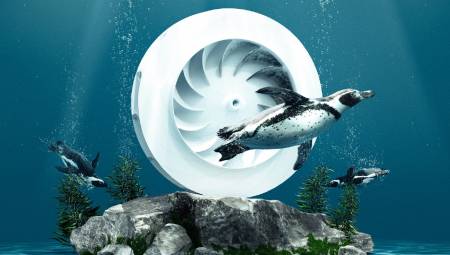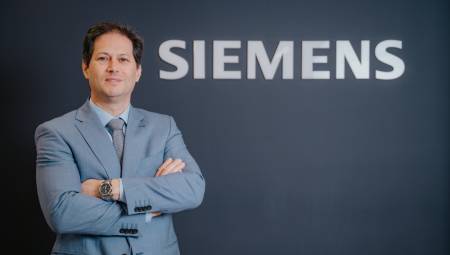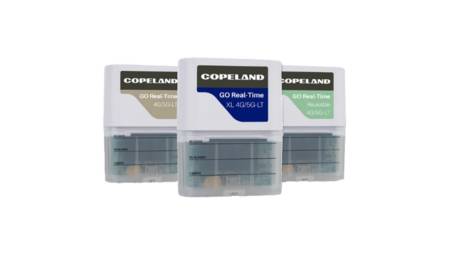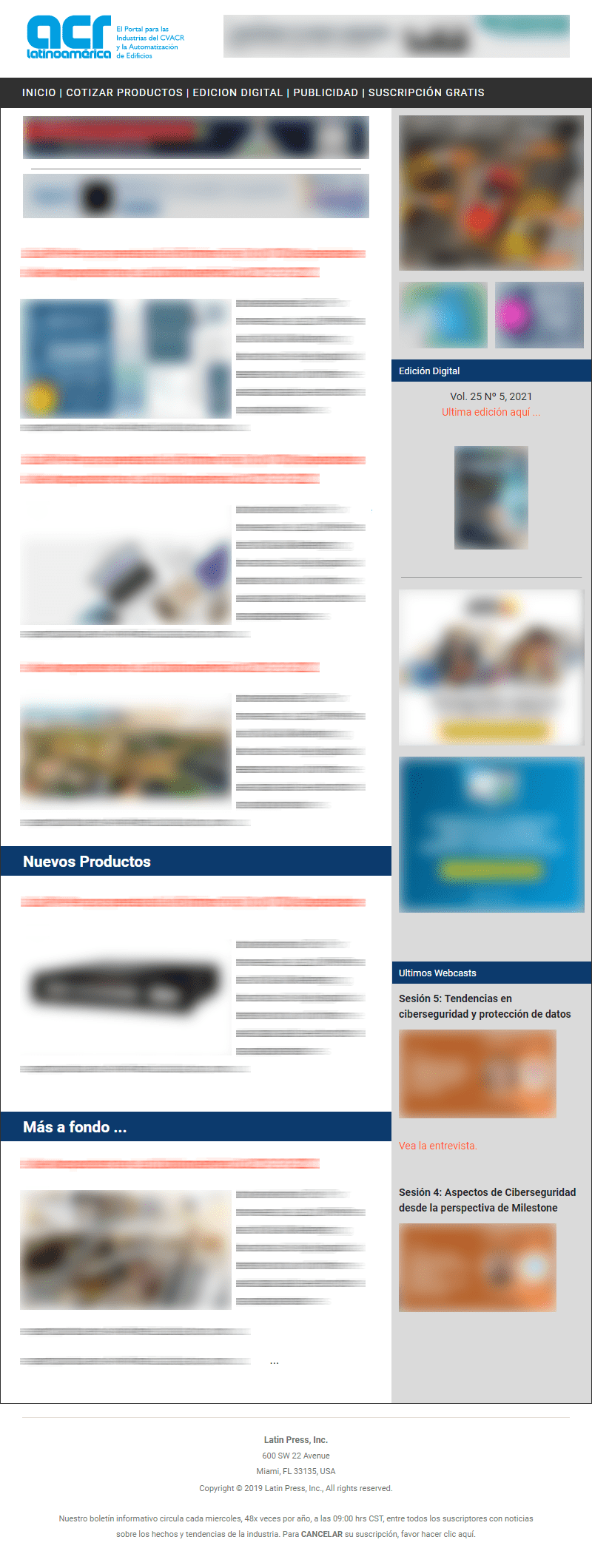 If there are elements in the cooling systems that contribute greatly in this eagerness of manufacturers to save energy, they are the expansion valves. This article will review some characteristics of these important equipment within the industry.
If there are elements in the cooling systems that contribute greatly in this eagerness of manufacturers to save energy, they are the expansion valves. This article will review some characteristics of these important equipment within the industry.By: Héctor Gómez Pérez
Rational energy consumption is a major issue on the current agenda of the refrigeration industry. For this reason, manufacturers have taken on the task of researching and launching equipment and systems with the best performance in the field. Something that on the one hand demonstrates an awareness of environmental issues and on the other represents a monetary respite for the users of the equipment by decreasing the payment of public services.
We wanted to invite two experts in the field of expansion valves to share, from their experience, the importance of this equipment in cooling systems and its contribution to the common goal of the industry: to save energy. They were Matthieu Ruille, Carel's agent for Latin America and Fernando Becerra, refrigeration manager at Danfoss Colombia.
The reason for the valves
The importance of these devices in the industry lies in the fact that they are suitable for improving control and energy savings in HVAC equipment. Or in Ruille's words: "Electronic expansion valves together with the drivers that handle them not only allow energy savings, but can increase the cooling capacity of the evaporator and prevent the return of liquid in the compressor, very effectively controlling overheating."
An electronic expansion valve allows energy savings by reducing condensation pressure. According to analysis, the compressor within a refrigeration system is the component that consumes the most energy; based on the article "Intelligent Refrigeration Control – a powerful tool for energy saving in supermarkets" written by Bodil Lindhard of the Refrigeration and A/C Controls Division of Danfoss, we find that in an ordinary supermarket the energy consumption in refrigeration systems is distributed as follows: condensers 47%, evaporator fans 19%, anti-fog resistors 18%, condenser fans 12% and defrost 4%.
The work of the compressor depends on the discharge suction pressure or also called condensation. "If we reduce the condensation pressure, we reduce the work of the compressor and, of course, we make energy savings," Ruille said. That's precisely what an electronic expansion valve does: save energy by reducing condensation pressure.
Thermostatic or electronic?
As Fernando Becerra explained, both thermostatic and electronic expansion valves fulfill the same function as long as they are direct expansion valves: to maintain a constant superheat in the evaporator. "Electronic expansion valves fulfill this function, but handle large load variations, up to 90% below design; on the other hand, the response speed is fast, while thermostatic expansion valves only tolerate +-20% thermal load variation to keep the superheat constant at 5oC and the response speeds are slower," Becerra said.
Among the differences of both that Ruille highlighted the most we have that "thermostatic valves are designed to work with a fixed Delta P (pressure), that is, with fixed condensation and evaporation temperatures. In the case of Carel, the electronics have a seat of 15 mm compared to the thermostatic ones that have only 1mm; this allows the former to have 480 different positions and therefore high accuracy."
"If we trace their history, electronic expansion valves were born in 1982 with modulating systems, then costs were reduced by working with pulsating valves with opening times ranging from three to six seconds. Nowadays the control tends to combine mechanical systems with the advantages of the pressure of electronics (mechatronics), not only to keep an evaporator full while preserving a superheat, but also to regulate pressures, defrosts, compressors, condensers, etc. "explained Becerra.
For his part, Ruille pointed out that "there are currently two types of electronic expansion valves: those that work with pulses and those that work with steps. The latter have a greater precision since the pulses act in a similar way to the thermostatic ones because they have on/off positions. It is true that electronic pulse valves allow energy savings, but their performance allows pressure shocks that constitute a significant danger for evaporators made of copper, especially if their capacity is increased."
Maintenance and precautions
When asking our guests about the precautions when using valves in the equipment or when it comes to maintenance, we find several aspects to highlight. The first to comment was Fernando Becerra, from Danfoss, who said that "the first thing to do is to design an adequate control sequence to achieve precision and safety for the products to be refrigerated and for the components of the refrigeration system. Secondly, a good selection of controls must be made according to the conditions and needs of the system," he also said that once the first two points have been met, the maintenance of the mechanical control elements is reduced to a minimum. "For electronic elements, routines must be done to verify readings, connections, etc.," he added.
In the case of pulse expansion valves, a pipe must be designed with an immediate diameter greater than that required by capacity, to lower the speed and reduce the effect of the pulse on the system. In addition, place the pressure sensor at the top of the pipe to prevent condensation from being generated in its terminal box.
"Any direct expansion valve must be selected so that the required capacity is 70 to 80% of the nominal capacity of the valve under the design conditions. This is shown by the program or the selection table," Becerra explained.
For his part, Matthieu Ruille, Carel's agent for Latin America, said that "when using a Carel valve, a filter must be put in place before to prevent impurities from entering the device. We also recommend putting the valve vertically or horizontally to prevent the electronic part from being down."
Sales and the future
On the sales of these devices, Ruille said they were very good, despite the period of crisis from which several economies have already begun to emerge. In the region, the countries that stood out the most in sales of expansion valves were Chile, Costa Rica, Colombia, Uruguay and Brazil. Internationally, he highlighted Australia as a major buyer.
Fernando Becerra reported that precisely in times of crisis companies seek to save energy and improve quality. "Electronic expansion valves are only one option, as they offer savings of 10-15% in high-temperature applications and 20-25% in low-temperature applications."
As for the challenges ahead, the representative of Carel agrees with the policy extended in the industry for a couple of years, to be more friendly to the environment. It considers it essential to achieve this goal to improve technologies and multiply initiatives such as the Bitzer Laboratory and Training Center for the use ofCO2 in Brazil.
For Becerra, the challenge for the industry also has a strong economic component considering that "currently the industry does not objectively analyze the energy saving options, there is a very high short-termism for investment returns in the refrigeration guild. The entrepreneur wants returns of less than one year, while in Europe they make investments with returns of two to three years."













